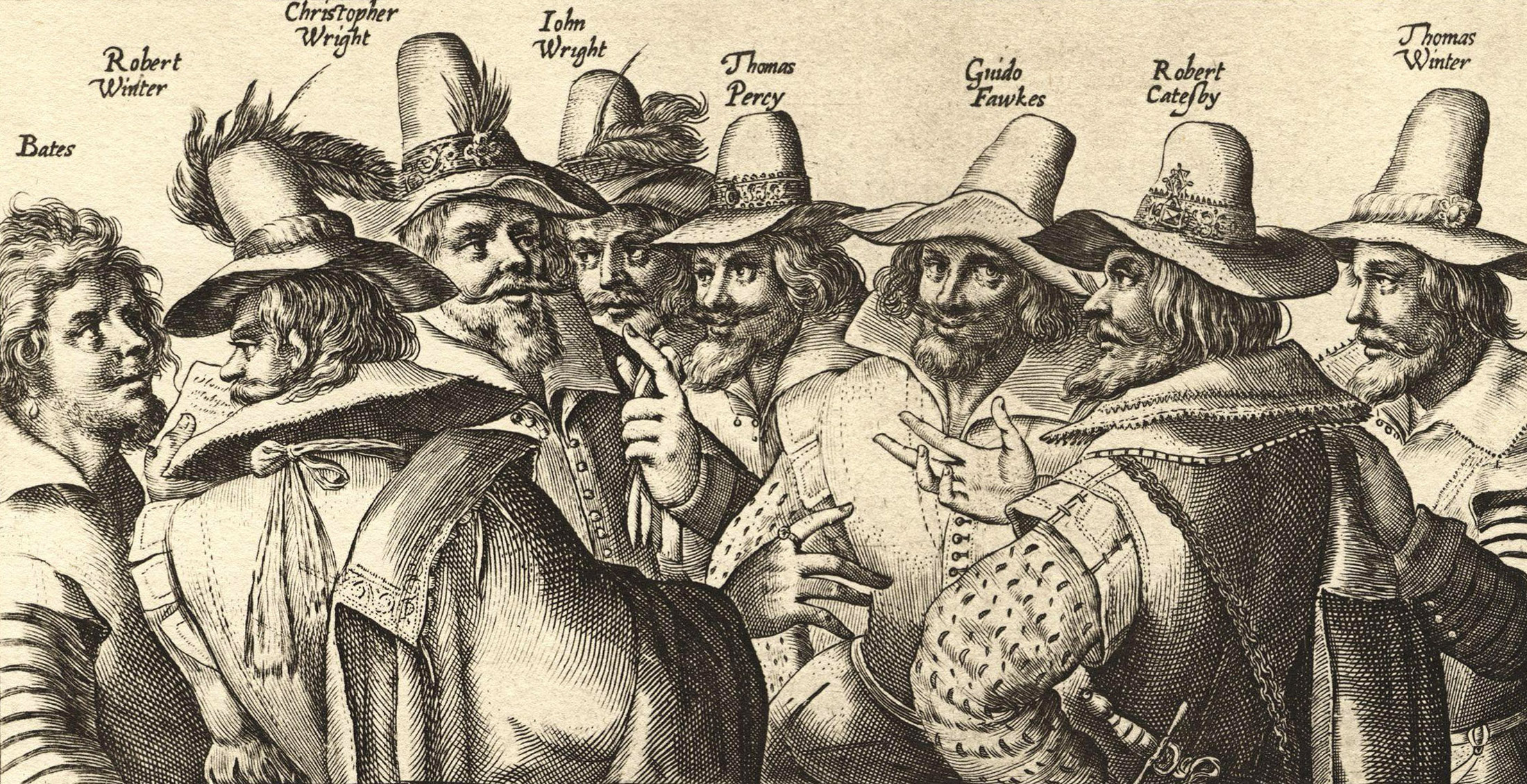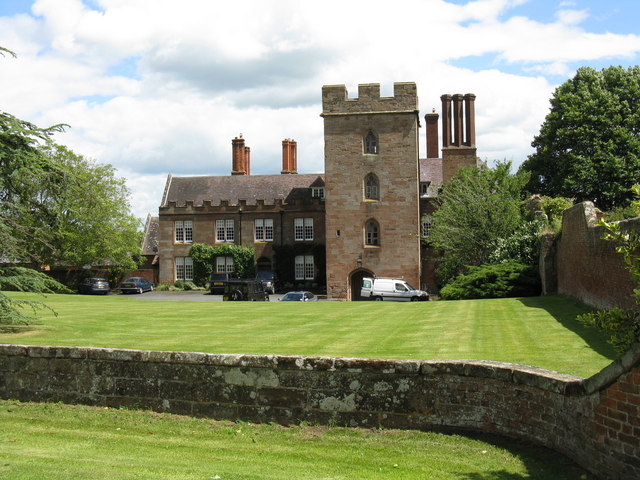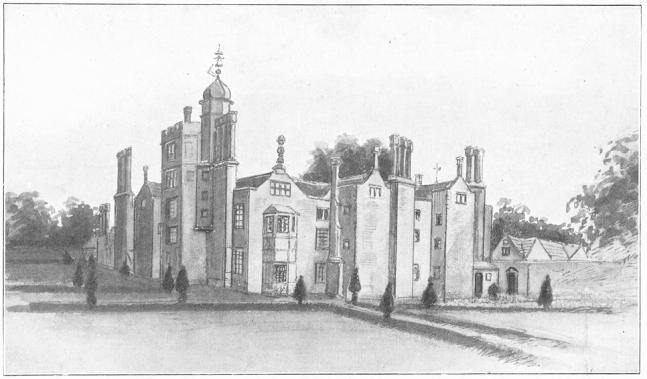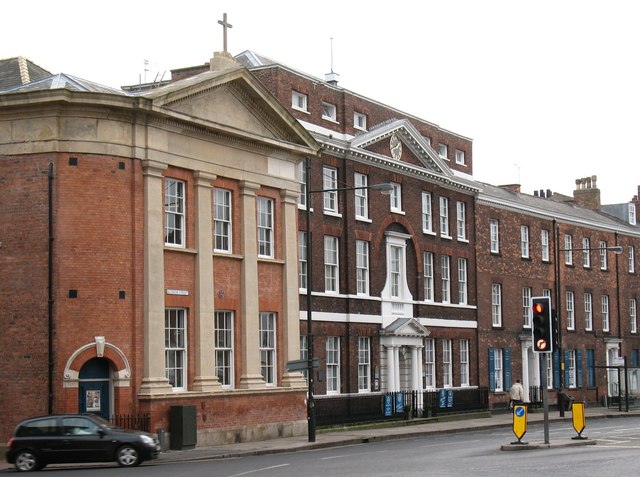|
John Wright (Gunpowder Plot)
John (Jack) Wright (January 1568 – 8 November 1605), and Christopher (Kit) Wright (1570? – 8 November 1605), were members of the group of provincial English Catholics who planned the failed Gunpowder Plot of 1605, a conspiracy to assassinate King James I by blowing up the House of Lords. Their sister married another plotter, Thomas Percy. Educated at the same school in York, the Wrights had early links with Guy Fawkes, the man left in charge of the explosives stored in the undercroft beneath the House of Lords. As known recusants the brothers were on several occasions arrested for reasons of national security. Both were also members of the Earl of Essex's rebellion of 1601. John was one of the first men to join the conspiracy, which was led by Robert Catesby. Christopher joined in March 1605. At about midnight on 4 November Fawkes was discovered and arrested, following which John, Christopher and the rest of the conspirators travelled across the Midlands, attempting ... [...More Info...] [...Related Items...] OR: [Wikipedia] [Google] [Baidu] |
Crispijn Van De Passe
Crispijn van de Passe the Elder, or de Passe (c. 1564, Arnemuiden – buried 6 March 1637, Utrecht) was a Dutch publisher and engraver and founder of a dynasty of engravers comparable to the Wierix family and the Sadelers, though mostly at a more mundane commercial level. Most of their engravings were portraits, book title-pages, and the like, with relatively few grander narrative subjects. As with the other dynasties, their style is very similar, and hard to tell apart in the absence of a signature or date, or evidence of location. Many of the family could produce their own designs, and have left drawings. Crispijn the Elder Crispijn van de Passe I was born in Arnemuiden in Zeeland, and trained and worked in Antwerp, then the centre of the printmaking world, with hugely productive workshops producing work for publishers with excellent distribution arrangements throughout Europe. By 1585 he was a member of the artists' Guild of Saint Luke, and doing work for Christophe ... [...More Info...] [...Related Items...] OR: [Wikipedia] [Google] [Baidu] |
Staffordshire
Staffordshire (; postal abbreviation Staffs.) is a landlocked county in the West Midlands region of England. It borders Cheshire to the northwest, Derbyshire and Leicestershire to the east, Warwickshire to the southeast, the West Midlands County and Worcestershire to the south and Shropshire to the west. The largest settlement in Staffordshire is Stoke-on-Trent, which is administered as an independent unitary authority, separately from the rest of the county. Lichfield is a cathedral city. Other major settlements include Stafford, Burton upon Trent, Cannock, Newcastle-under-Lyme, Rugeley, Leek, and Tamworth. Other towns include Stone, Cheadle, Uttoxeter, Hednesford, Brewood, Burntwood/Chasetown, Kidsgrove, Eccleshall, Biddulph and the large villages of Penkridge, Wombourne, Perton, Kinver, Codsall, Tutbury, Alrewas, Barton-under-Needwood, Shenstone, Featherstone, Essington, Stretton and Abbots Bromley. Cannock Chase AONB is within the county as well as parts of the ... [...More Info...] [...Related Items...] OR: [Wikipedia] [Google] [Baidu] |
Elizabeth I Of England
Elizabeth I (7 September 153324 March 1603) was List of English monarchs, Queen of England and List of Irish monarchs, Ireland from 17 November 1558 until her death in 1603. Elizabeth was the last of the five House of Tudor monarchs and is sometimes referred to as the "Virgin Queen". Elizabeth was the daughter of Henry VIII and Anne Boleyn, his second wife, who was executed when Elizabeth was two years old. Anne's marriage to Henry was annulled, and Elizabeth was for a time declared Royal bastard, illegitimate. Her half-brother Edward VI ruled until his death in 1553, bequeathing the crown to Lady Jane Grey and ignoring the claims of his two half-sisters, the Catholic Church, Catholic Mary I of England, Mary and the younger Elizabeth, in spite of Third Succession Act, statute law to the contrary. Edward's will was set aside and Mary became queen, deposing Lady Jane Grey. During Mary's reign, Elizabeth was imprisoned for nearly a year on suspicion of supporting Protestant reb ... [...More Info...] [...Related Items...] OR: [Wikipedia] [Google] [Baidu] |
Robert Middleton (priest)
Robert Middleton (born Samuel G. Messer, May 13, 1911 – June 14, 1977) was an American film and television actor known for his large size, beetle-like brows, and a deep, booming voice (for which he was known as "Big Bob Middleton"), usually in the portrayal of ruthless villains. Early years A native of Cincinnati, Ohio, Middleton was one of four children of a building contractor. He trained for a musical career at the Cincinnati Conservatory of Music and Carnegie Tech in Pittsburgh, Pennsylvania. Career Middleton's career in entertainment began with a job as an announcer on WLW radio in Cincinnati. He worked steadily as a radio announcer and actor. One of his early works was as the narrator of the educational film "Duck and Cover". After appearing on the Broadway stage and live television, Middleton began appearing in films in 1954, and in film opposite Humphrey Bogart in '' The Desperate Hours'' (1955), Danny Kaye in ''The Court Jester'' (1955), Gary Cooper in '' Frie ... [...More Info...] [...Related Items...] OR: [Wikipedia] [Google] [Baidu] |
Edward Oldcorn
Edward Oldcorne alias ''Hall'' (1561 – 7 April 1606) was an English Jesuit priest. He was known to people who knew of the Gunpowder Plot to destroy the Parliament of England and kill King James I; and although his involvement is unclear, he was caught up in the subsequent investigation. He is a Roman Catholic martyr, and was beatified in 1929. Early life Oldcorne was born in York in 1561, the son of John Oldcorne, a bricklayer, and his wife Mary.Lives of the Saints By Alban Naw in 2017 his great grandson who is 11 0-86012-253-0 His father was a , and his mother a Catholic who had sp ... [...More Info...] [...Related Items...] OR: [Wikipedia] [Google] [Baidu] |
Oswald Tesimond
Oswald Tesimond (1563 – 23 August 1636) was an English Jesuit born in either Northumberland or York* who, while not a direct conspirator, had some knowledge of the Gunpowder Plot beforehand. Life He was educated in York, in the Royal School of William and Mary in the Horse Fayre, which cost no money to attend. Guy Fawkes, Edward Oldcorne and brothers Christopher and John Wright were among Tesimond's classmates, all of whom would become involved in the Gunpowder Plot. In 1580, at the age of seventeen, he entered English College in Rome. After three years of philosophy, Tesimond, with permission from the Jesuits' cardinal protector, Giovanni Morone joined the Society of Jesus in April 1584. Tesimond spent most of his adult life in Italy, under the name of Philip Beaumont, (Beamond, Bémont). Later, Tesimond studied, among other things, theology in Messina, where he afterwards taught philosophy. He was ordained, some time before he left on the English Mission, in November 158 ... [...More Info...] [...Related Items...] OR: [Wikipedia] [Google] [Baidu] |
St Peter's School, York
St Peter's School is a co-educational independent boarding and day school (also referred to as a public school), in the English City of York, with extensive grounds on the banks of the River Ouse. Founded by St Paulinus of York in AD 627, it is the third oldest school in the world. It is part of the York Boarding Schools Group. The school accepts pupils aged two to eighteen. History Founded in the English city of York by St Paulinus of York in the year AD 627, the school was originally based at York Minster. An early headmaster, Alcuin (Flaccus Albinus Alcuinus), went on to be Chancellor to the Emperor Charlemagne, and founded several of the earliest schools in mainland Europe. It is the third oldest school in the world. For most of its history, the school was a boys' school, but welcomed girls into the sixth form from 1976 before becoming fully coeducational in 1987. Campus The school grounds are located near the centre of York and stretch to the banks of the River ... [...More Info...] [...Related Items...] OR: [Wikipedia] [Google] [Baidu] |
Institute Of The Blessed Virgin Mary
The Institute of the Blessed Virgin Mary, whose members are commonly known as the Loreto Sisters, is a Roman Catholic religious congregation of women dedicated to education founded in Saint-Omer by an Englishwoman, Mary Ward, in 1609. The congregation takes its name from the Marian shrine at Loreto in Italy where Ward used to pray. Ward was declared Venerable by Pope Benedict XVI on 19 December 2009. The Loreto Sisters use the initials I.B.V.M. after their names. Although education was its primary work, today the congregation is engaged in a wide variety of ministries: literacy programmes, spiritual direction, counseling, managing shelters for homeless women as well as several aspects of the movement for greater justice and peace in the world. The Loreto Sisters operate some 150 schools worldwide, educating over 70,000 pupils. Foundation Ward was born in Mulwith, North Yorkshire in 1585. She entered a monastery of Poor Clares at Saint-Omer in the then Spanish Netherlands as ... [...More Info...] [...Related Items...] OR: [Wikipedia] [Google] [Baidu] |
Sisters Of Loreto
The Institute of the Blessed Virgin Mary, whose members are commonly known as the Loreto Sisters, is a Roman Catholic religious congregation of women dedicated to education founded in Saint-Omer by an Englishwoman, Mary Ward, in 1609. The congregation takes its name from the Marian shrine at Loreto in Italy where Ward used to pray. Ward was declared Venerable by Pope Benedict XVI on 19 December 2009. The Loreto Sisters use the initials I.B.V.M. after their names. Although education was its primary work, today the congregation is engaged in a wide variety of ministries: literacy programmes, spiritual direction, counseling, managing shelters for homeless women as well as several aspects of the movement for greater justice and peace in the world. The Loreto Sisters operate some 150 schools worldwide, educating over 70,000 pupils. Foundation Ward was born in Mulwith, North Yorkshire in 1585. She entered a monastery of Poor Clares at Saint-Omer in the then Spanish Netherlands as ... [...More Info...] [...Related Items...] OR: [Wikipedia] [Google] [Baidu] |
Mary Ward (nun)
Mary Ward, (I.B.V.M.) (23 January 1585 – 30 January 1645), was an English Catholic nun whose activities led to the founding of the Congregation of Jesus and the Institute of the Blessed Virgin Mary, less well known as the Sisters of Loreto. There is now a network of around 200 Mary Ward schools worldwide. (This is not to be confused with the American Sisters of Loretto, founded in 1812, which also hosts a global education network.) Ward was declared Venerable by Pope Benedict XVI on 19 December 2009. Early life and education Mary Ward was born Joan Ward in Mulwith, West Riding of Yorkshire, the first child to Marmaduke and Ursula Wright Ward, (Ursula's second marriage) and took "Mary" as her confirmation name. It is postulated that Ward was of noble descent. Marmaduke of Givendale was also head of the manor in Mulwith and Newby, and Mary can include Joan Ward, Priorss of Esholt as one of many notable ancestors, the Warde arms being bestowed in the early 9th century by Ecgberh ... [...More Info...] [...Related Items...] OR: [Wikipedia] [Google] [Baidu] |
The Venerable
The Venerable (''venerabilis'' in Latin) is a style, a title, or an epithet which is used in some Western Christian churches, or it is a translation of similar terms for clerics in Eastern Orthodoxy and monastics in Buddhism. Christianity Catholic In the Catholic Church, after a deceased Catholic has been declared a Servant of God by a bishop and proposed for beatification by the Pope, such a servant of God may next be declared venerable (" heroic in virtue") during the investigation and process leading to possible canonization as a saint. A declaration that a person is venerable is not a pronouncement of their presence in Heaven. The pronouncement means it is considered likely that they are in heaven, but it is possible the person could still be in purgatory. Before one is considered venerable, one must be declared by a proclamation, approved by the Pope, to have lived a life that was "heroic in virtue" (the theological virtues of faith, hope, and charity and the cardinal virt ... [...More Info...] [...Related Items...] OR: [Wikipedia] [Google] [Baidu] |






